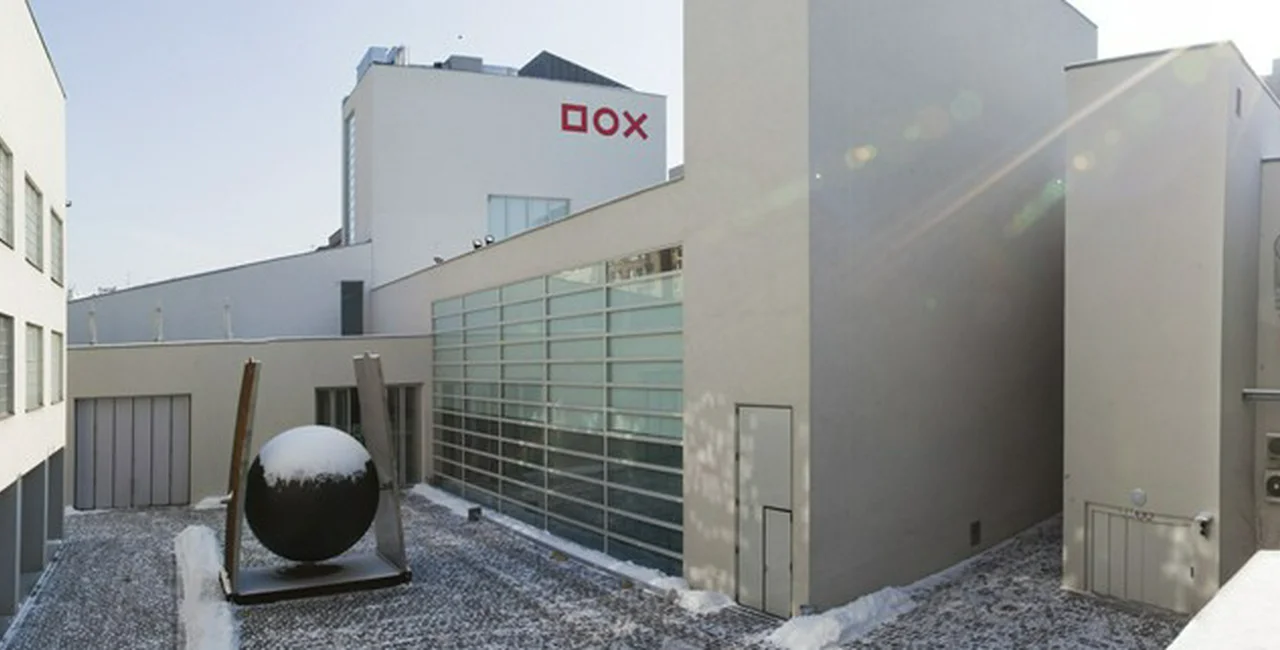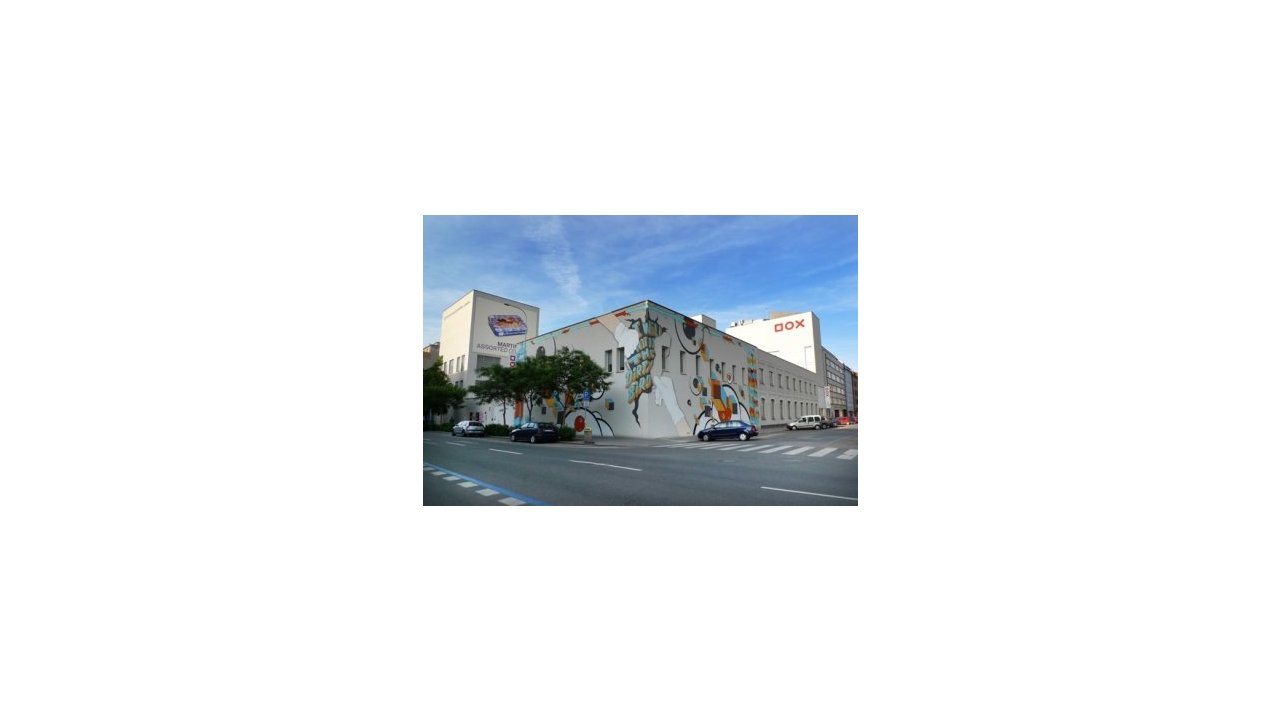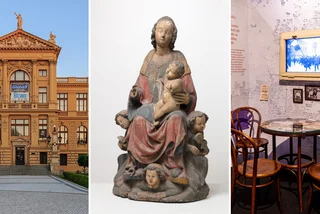Last weekend I was at DOX Centre for Contemporary Art, in Prague 7. At around two p.m. I walked out onto the sculpture terrace that forms part of the award-winning 6,250m2 site. Two monumental works by Aleš Veselý, one of the Czech Republic’s and Europe’s most important modern sculptors, are currently displayed here. The terrace is massive, as big as two tennis courts at least, and on this bright winter day I spent around fifteen minutes admiring these impressive metal works. The terrace was still and quiet and I had the place to myself. I had the place to myself. It was a Saturday afternoon and yet there was hardly a soul to be seen.
How can this be? It its own words, DOX was created with the mission to serve the general public – but last weekend the public was not there.
Let’s go back a bit. Opened in 2008, DOX is an independent, non-commercial international centre for contemporary art, aiming “to present and advance contemporary art in the context of issues that are changing today‘s world”.
DOX is housed in a colossal building located in what is arguably Prague’s most dynamic quarter, Holešovice. The gallery was formerly a metal factory, spectacularly yet sympathetically transformed by renowned architect Ivan Kroupa. The site now includes traditional gallery space, a café, art library, book shop and design shop. Over the past five years, lectures have supported numerous exhibitions from the on-site auditorium.
DOX serves to present contemporary art, architecture, and design in a way that the Centre’s founders (Leoš Válek, Robert Aafjes, Václav Dejcmar and Richard Fuxa) say was lacking in the Czech Republic – a dig no doubt at the much-criticised leadership of the National Gallery in Prague under Milan Knížák.
There is of course a risk that privately funded galleries allow art to become the plaything of the rich. That artistic development will follow the well-paying whims of the Saatchi’s, the Getty’s and a sea of other entrepreneurs. On the other hand, these are not good economic times for publicly funded cultural establishments so generous philanthropists are not to be sniffed at. Moreover, DOX takes its role very seriously. It benefits from the expertise of an active advisory board that includes representatives from a number of international galleries, boasts a varied programme of focused and intriguing exhibitions (48 in the last two years) and appears genuinely interested in nurturing young Czech talent and Prague as a city. DOX’s founders’ interest in the development of the Czech capital is well demonstrated by a current, thrilling, exhibition Anastomosis, which presents architectural designs for regenerating Prague’s urban structure.
In fact, DOX appears to operate in the very way that official state institutions should. There is some danger of overlap, however: DOX now hosts the finalists of the annual competition for young artists – Cena Jindřicha Chalupeckého – a competition that has run since 1990. At the same time, Cena 333NG (a competition for Czech and Slovak artists up to the age of 35) is in its fifth year at the National Gallery at Veletržní Palác. It is not clear whether the duplication increases opportunities for young artists, or merely dilutes and confuses their efforts.
DOX does get some simple things wrong: a confusing internal layout with limited signage between separate exhibitions is frustrating. Slow café service is inexplicable when it’s so quiet. Laminated paper rather than proper mounted information can look unprofessional. But it gets more things right: Dual or multi language signage, a welcoming entrance lobby with helpful staff, and an active Facebook and Twitter presence are all plus points.
DOX has also cottoned on to a fact that has sorely confounded most other galleries and museums in Prague: that a modern cultural establishment deserves a shop that is relevant to the exhibitions it hosts. Case in point: last weekend the bookshop was stocked with a number of books about the work of Aleš Veselý, texts accompanying Middle East Europe and a huge number of books about modern architecture to complement Anastomosis. This contrasts starkly with the miserable offerings available at Rudolfinum’s David LaChapelle exhibition or Tauromaquiaat Municipal House. DOX’s design shop is a marvelous place generally, stocking stunning but pricey glassware, porcelain, jewelry, furniture and other work by a number of leading contemporary Czech designers, as well as an enviable range coffee-table books and my personal favourite – Czech made Koh-i-Noor pencils.
DOX’s empty halls are a shame, but I have noticed on a number of trips over the last 18 months that the place frequently seems deserted. This time I decided to test my theory that at any given moment DOX has more staff than visitors. I kept a running tally as I wandered through the vast halls largely devoid of visitors, trying not to count people twice. I was almost proved correct. I counted 14 staff and 19 visitors (including myself). Nineteen. On a Saturday afternoon a gallery of this calibre should have been so crawling with people that I couldn’t have hoped to count them.
I can only think of a couple of sensible reasons why DOX is not flooded with locals, expats and tourists. Location is one. Whilst Prague 7 is hardly the end of the earth, DOX is not located near very much else like it (aside from Veletržní Palác which is similarly under-frequented) and tourists in particular do not have much of a reason to visit. Additionally, the Czech Republic is not regularly enough associated with modern art and design. Growth in this area is often noted in other cities such as Berlin and Amsterdam, but less so Prague. Tourists to Prague visit more commonly to see the old sights, rather than the new.
This will change. Prague 7 is undergoing a process of transformation: it was one of the inner neighbourhoods chosen by urban planners for redevelopment. New office blocks and residential plots have or are due to reach completion, and the former brewery has been converted into mixed-use development. Anastomosis shows a wider interest in modern Czech urban development. DOX is part of this process and its location is appropriate, if unhelpful in the short term. However, it is not easily enough within the public’s line of sight and must do more to attract visitors.
Visit DOX as soon as possible – with any luck (and a sterling PR drive) in the future you will be queuing to get in.
DOX – Centre for Contemporary Art
Poupětova 1
Praha 7 – Holešovice
170 00
www.dox.cz
Related articles












 Reading time: 5 minutes
Reading time: 5 minutes 



































